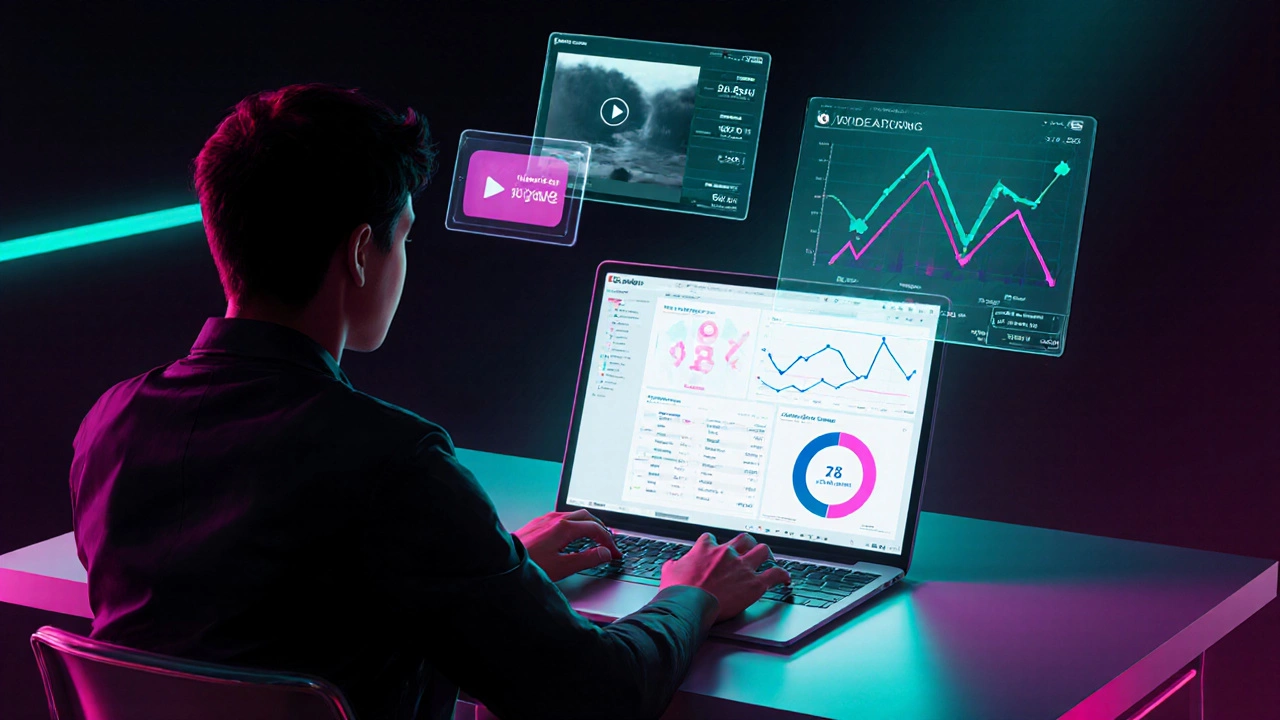
eLearning Stage Time Calculator
The article explains that a typical eLearning project allocates time as: 10% Analysis, 20% Design, 50% Development, and 20% Evaluation. Enter your total project time below to see how this breaks down.
When people talk about eLearning is a digital delivery of educational content that can be accessed anytime, anywhere via the internet, they often overlook its life‑cycle. Ignoring the life‑cycle is why a recent SurveyMonkey poll found that 65% of corporate training programs fail to meet learning objectives.
Understanding the eLearning stages helps you plan, build, and fine‑tune courses so learners actually retain what you teach. Below is a practical walk‑through of the four stages that most instructional designers use today.
1. Analysis - What do learners need?
Analysis is the grounding step. You gather data about the target audience, business goals, and existing knowledge gaps. Typical tools include surveys, interviews, and job‑task analyses.
Key actions during Analysis:
- Identify learner personas and their tech comfort level.
- Map learning objectives to measurable business outcomes.
- Audit any existing content that can be repurposed.
When you finish this stage, you should be able to answer questions like “What should the learner be able to do after the course?” and “Which metrics will prove success?”
2. Design - How will you teach it?
Design translates the “what” from Analysis into a structured blueprint. Here you decide on the instructional strategy, sequence of modules, and assessment types.
Instructional Design is a systematic process for creating engaging learning experiences that align with objectives and learner characteristics and often follows the ADDIE framework.
During Design, you also align content with Bloom's Taxonomy is a hierarchical model that classifies learning goals from remembering to creating. For example, a module that ends with a simulation targets the “apply” and “create” levels.
Deliverables include storyboards, screen‑flow diagrams, and a detailed assessment plan.
3. Development - Build the learning assets
Development is where the blueprint becomes a real course. You assemble text, graphics, audio, video, and interactive elements in a Learning Management System is a software platform that hosts, tracks, and reports on eLearning courses or authoring tool like Articulate Rise or Adobe Captivate.
Best practices for Development:
- Keep slides simple - one idea per slide, high‑contrast colors, and legible fonts.
- Use Multimedia is a mix of audio, video, and graphics that caters to different learning styles strategically; a short narration can replace bulky text.
- Insert frequent knowledge checks - drag‑and‑drop, scenario‑based questions, or quick polls.
- Link every activity back to a learning objective.
At the end of Development you have a functional prototype ready for testing.
4. Evaluation - Does it work?
Evaluation measures the impact of the course and informs future revisions. Two levels are common: formative (ongoing) and summative (post‑completion).
Formative Evaluation happens during Development through pilot tests, usability reviews, and analytics like Learning Analytics is a data‑driven insights about learner behavior, performance, and engagement. Look for high dropout points and low quiz scores.
Summative Evaluation uses pre‑ and post‑tests, ROI calculations, and feedback surveys to answer “Did we achieve the business goal?”
Based on the findings, you loop back to the Analysis stage, tweak content, or even redesign the entire course.
Quick Reference Table
| Stage | Goal | Key Activities | Typical Tools |
|---|---|---|---|
| Analysis | Define learner needs & business outcomes | Surveys, interviews, job‑task analysis | Google Forms, Excel, stakeholder workshops |
| Design | Blueprint the learning journey | Storyboarding, selecting instructional strategies, mapping Bloom’s levels | PowerPoint, Lucidchart, Adobe XD |
| Development | Produce interactive course assets | Authoring, multimedia creation, LMS integration | Articulate Rise, Camtasia, Moodle |
| Evaluation | Measure impact and improve | Analytics review, surveys, ROI calculations | Google Analytics, xAPI dashboards, SurveyMonkey |
Common Pitfalls and How to Avoid Them
Pitfall 1: Skipping Analysis because it feels like extra work. Result - you build content that doesn’t match learner skill levels, leading to low completion rates.
Solution: Allocate at least 20% of the project timeline to data gathering. Even a short questionnaire can reveal critical gaps.
Pitfall 2: Overloading modules with text and animations. Result - cognitive overload and high dropout.
Solution: Follow the “chunking” rule: keep each screen under 150 words and limit animations to one per slide.
Pitfall 3: Forgetting to collect post‑course data. Result - you never know if the training moved the needle.
Solution: Build a post‑assessment and a simple ROI survey into the LMS from day one.

Pro Tips for Each Stage
- Analysis: Use the “5 Whys” technique to drill down to the root business problem.
- Design: Prototype a single interactive scenario early and get stakeholder buy‑in.
- Development: Record audio in a quiet room and edit with Audacity - it saves time and improves clarity.
- Evaluation: Set up a dashboard that visualizes completion rates, quiz scores, and time‑on‑task in one view.
Next Steps for Designers
If you’re ready to start a new course, begin with a one‑page Analysis template. Fill in learner demographics, desired outcomes, and existing resources. Then move to a storyboard that aligns each objective with a Bloom’s level. This simple workflow keeps the four stages front‑and‑center and prevents you from skipping any crucial step.
Frequently Asked Questions
Why are there only four stages and not five?
The classic ADDIE model includes five phases (Analysis, Design, Development, Implementation, Evaluation), but most eLearning projects merge Implementation into Development because the LMS launch is part of building the final product. That’s why you often see a four‑stage version.
How long should each stage take?
Timing varies by project size. A rule of thumb is 10% of total effort for Analysis, 20% for Design, 50% for Development, and 20% for Evaluation. Small micro‑learning modules may compress these percentages.
Can the stages be revisited?
Absolutely. The process is iterative. If Evaluation reveals gaps, you loop back to Analysis, redesign, and redevelop. That’s how you keep courses relevant.
What tools help with the Evaluation stage?
xAPI (Tin Can) dashboards, Google Analytics for LMS traffic, and survey platforms like SurveyMonkey or Typeform are common. Pair them with ROI calculators to tie learning outcomes to business impact.
Is Bloom’s Taxonomy still relevant?
Yes. It provides a clear map from basic recall to creative synthesis, which guides both assessment design and activity selection across all four stages.
